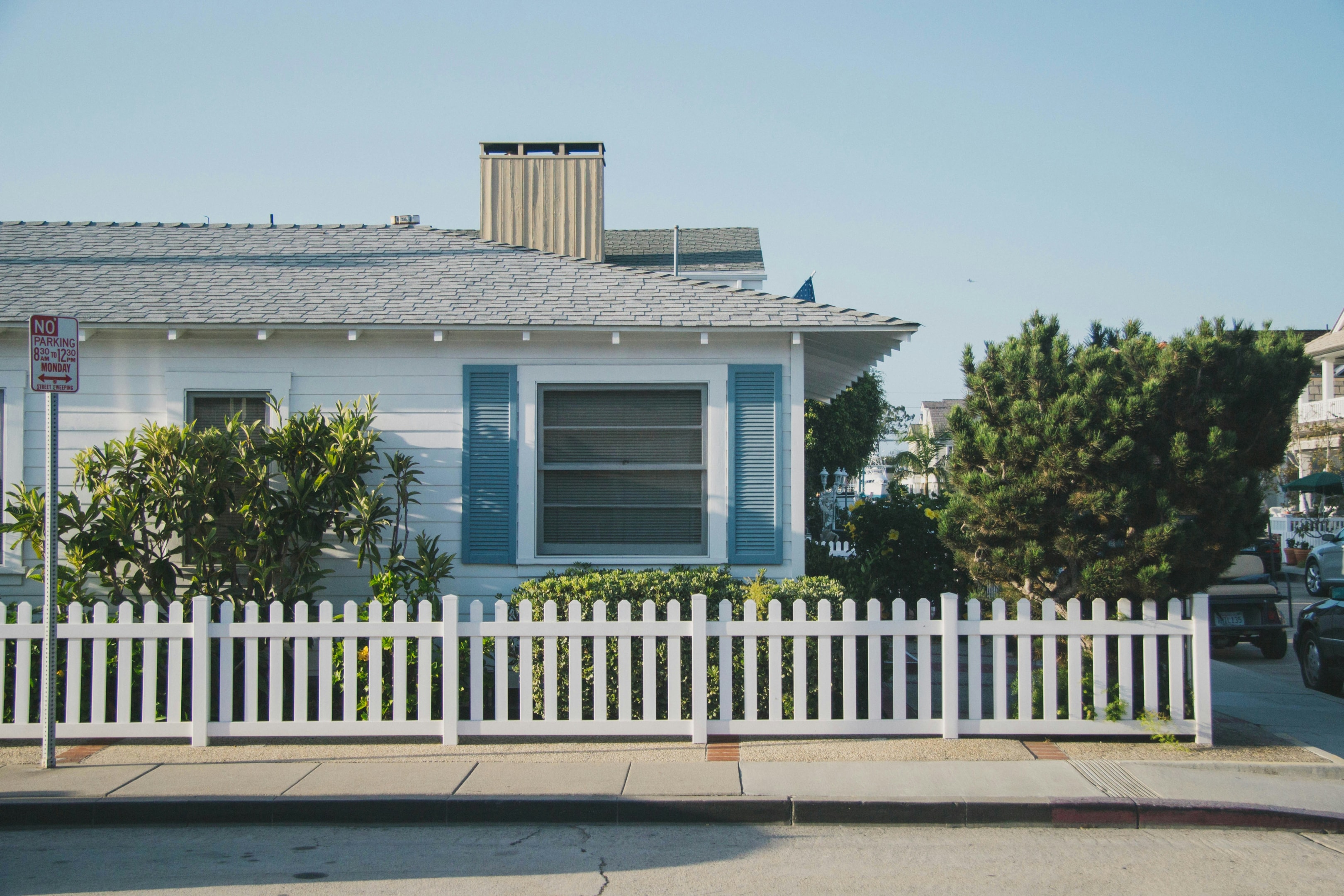Owning Retail Real Estate: A Complete Guide for Investors
Introduction to Owning Retail Real Estate
If you've ever dreamed of owning a piece of property that generates steady income while potentially appreciating in value, retail real estate might be the path for you. Retail spaces—from small neighborhood strip malls to large shopping centers—play a crucial role in everyday commerce. For investors, these properties offer a combination of consistent cash flow, long-term wealth building, and the chance to own tangible, income-producing assets. But retail investing isn't a walk in the park—it requires smart strategy, careful evaluation, and the ability to adapt to a shifting consumer landscape.

What Is Retail Real Estate?
Retail real estate refers to physical spaces leased to businesses that sell directly to consumers. These include restaurants, clothing stores, grocery chains, pharmacies, coffee shops, and entertainment venues. Essentially, if you've ever walked into a store, you've stepped into someone's retail real estate investment. Unlike residential rentals, where tenants are individuals or families, retail tenants are businesses whose success directly impacts your returns.
Why Retail Real Estate Remains a Powerful Asset Class
Even with the rise of e-commerce, retail properties continue to provide value. Physical stores are still the backbone of commerce because they offer something online platforms can't—experiences, convenience, and human connection. As retailers adopt omnichannel models (combining online and offline strategies), retail spaces remain essential to their operations.
Who Should Consider Investing in Retail Properties
Retail real estate isn't for everyone. It's best suited for investors who:
Have access to significant upfront capital.
Want stable, predictable cash flow.
Are comfortable with long-term investments.
Are willing to manage property upkeep or hire professionals.
If you fall into this category, retail real estate could be one of the most rewarding parts of your portfolio.
Benefits of Owning Retail Real Estate
Consistent Cash Flow Potential
Retail leases often span 5–20 years, providing property owners with the advantage of predictable and stable rental income. These long-term commercial leases reduce the frequency of tenant turnover, which helps maintain steady cash flow and minimizes vacancy risks. This stability is a key benefit for investors seeking reliable passive income from their commercial real estate holdings.
Appreciation and Long-Term Wealth Building
Prime retail locations generally appreciate over time, especially as communities grow and develop. Owning retail real estate allows investors to benefit from both rental income and property appreciation. Strategic investments in high-demand areas can lead to substantial property value increases, contributing to long-term wealth accumulation. Additionally, retail properties often have the potential for redevelopment or expansion, further enhancing property appreciation.
Tax Benefits and Incentives
Owners of retail real estate can take advantage of various tax benefits, including deductions for depreciation, mortgage interest, real estate taxes, and operating expenses. These tax advantages help reduce the overall tax burden and improve the net return on investment. Moreover, certain commercial real estate investment strategies, such as 1031 exchanges, allow investors to defer capital gains taxes by reinvesting proceeds into comparable properties, optimizing tax efficiency. To learn more about the tax incentives of owning real estate, see Maximize Your Returns: Tax Benefits of Real Estate Investing Explained.

Stability Through Long-Term Leases
Compared to residential leases, retail commercial leases tend to be longer, often ranging from 5 to 20 years, which provides greater stability and reduces turnover-related costs. Many retail leases are structured as triple net leases (NNN), where tenants are responsible for property expenses directly, such as real estate taxes, insurance, and maintenance. This arrangement shifts many property expenses to tenants, lowering the financial and management burden on the property owner and making retail real estate one of the lowest maintenance income producers.
Diversification of Investment Portfolio
Adding retail commercial real estate to an investment portfolio helps diversify risk across different asset classes. Unlike residential properties, retail real estate is influenced by different market dynamics, tenant types, and lease structures. This diversification can protect investors against downturns in other sectors, such as residential real estate or stocks, while providing an additional stream of income. For commercial real estate investors, owning retail real estate complements other property types like office buildings, industrial spaces, and multifamily apartment buildings, creating a balanced and resilient portfolio.
Challenges of Retail Real Estate Ownership
Market Volatility and Economic Cycles
Retail real estate is highly sensitive to fluctuations in consumer spending habits, which often shift during economic downturns and recessions. Changes in the broader commercial real estate market can lead to varying demand levels for retail spaces, impacting rental income stability. Investors should conduct thorough financial analysis and monitor market supply trends to anticipate and mitigate the effects of these economic cycles on their retail properties. Understanding these dynamics is crucial for setting realistic investment goals and managing risks associated with owning commercial real estate.
High Upfront Capital and Financing Barriers
Buying commercial real estate, especially retail properties, typically requires a significant upfront investment. The purchase price for a commercial retail building can be substantial, often necessitating hundreds of thousands or even millions of dollars in capital. Securing financing can be challenging, with lenders requiring strong credit, sizable down payments, and comprehensive documentation such as the current owner's income statement. Options like SBA loans and traditional long-term loans are available but come with strict qualification criteria. Prospective investors should factor in property management expenses and potential property repairs when budgeting to ensure a worthwhile investment.

Vacancy Risks and Tenant Dependency
Retail real estate investments carry the risk of vacancy, particularly when anchor tenants—such as grocery stores or large national chains—vacate the property. Losing an anchor tenant can reduce foot traffic, negatively impacting smaller commercial tenants and overall rental income. Managing multiple tenants requires careful lease structuring and proactive tenant relations to maintain occupancy. Commercial leases often include clauses to protect landlords, but investors should remain vigilant about public safety concerns and property upkeep to retain tenant interest and minimize turnover.
Rising Maintenance and Operational Costs
Owning retail real estate involves ongoing property repairs, maintenance, insurance, and taxes that can significantly affect profitability if not managed effectively. While triple net leases shift many property expenses directly to commercial tenants, property owners may still incur costs related to common area maintenance and unexpected repairs. Property management expenses can add to operational costs, emphasizing the importance of hiring a knowledgeable property manager who can oversee maintenance and ensure compliance with zoning laws and safety regulations. Budgeting for potential costs and establishing capital reserve funds are essential strategies to handle these financial responsibilities.
Impact of E-Commerce and Shifts in Consumer Behavior
The rise of e-commerce has transformed the retail landscape, challenging traditional brick-and-mortar stores. However, retail properties that emphasize experiential retail, convenience, and services that cannot be replicated online continue to generate income and appreciate in value. Retailers increasingly adopt omnichannel strategies, integrating online and physical store operations, which sustains demand for well-located retail spaces. Investors must stay informed about market trends and adapt their property management and leasing strategies accordingly to capitalize on these shifts and maintain a competitive edge in the commercial real estate market.
Types of Retail Real Estate Investments
Neighborhood Strip Malls – Smaller retail centers with service-oriented businesses like salons, cafes, and fitness studios.
Standalone Retail Pads – Single-tenant properties often occupied by banks, fast-food restaurants, or pharmacies.
Power Centers and Big-Box Retailers – Large developments anchored by well-known national chains like Target or Best Buy.
Regional Shopping Malls – Large-scale properties that attract diverse foot traffic but face higher risks from e-commerce.
Lifestyle Centers and Mixed-Use Developments – Popular in urban areas, these blend retail, dining, entertainment, and residential units.
Specialty Retail Properties – Includes outlets, entertainment complexes, and boutique shopping districts.

How to Evaluate Retail Properties Before Buying
When considering a retail property, pay close attention to:
Location, Visibility, and Accessibility – High-traffic areas increase success rates.
Tenant Mix and Anchor Tenants – A strong anchor tenant stabilizes the property and attracts customers.
Lease Structures – Triple net (NNN) leases shift expenses like taxes, insurance, and maintenance to the tenant, reducing landlord risk.
Rent Escalations and Renewal Options – Look for contracts with built-in rent increases.
Demographics and Local Market Data – Analyze population growth, income levels, and spending patterns.
Competition Analysis – Study nearby retail centers to understand the competitive landscape.
Financing Options for Retail Real Estate
Investors can explore multiple financing routes:
Conventional Bank Loans – Require strong credit and high down payments.
CMBS Loans – Packaged loans sold to investors, often with favorable rates.
Private Investors and Syndications – Useful for those pooling resources.
REITs – A hands-off way to invest in retail property portfolios. To learn more, read Real Estate Investment Trusts (REITs): A Comprehensive Guide for Smart Investors.
Crowdfunding – Platforms that allow small investors to buy fractional interests.
Retail Real Estate Investment Strategies
Buy-and-Hold – Long-term stability with consistent rental income.
Value-Add Investments – Renovate or reposition properties to increase rents.
Redevelopment and Adaptive Reuse – Convert underperforming malls into mixed-use properties.
Ground Leases and Build-to-Suit – Tenants finance their own buildings on your land.
Exit Strategies – Plan whether to refinance, sell, or hold based on market cycles. For tips on choosing the proper exit strategy for your investment, see The Best Exit Strategies in Real Estate for Successful Investments.
The Impact of E-Commerce and Technology
Retail has shifted, but it hasn't disappeared:
Omnichannel Retailing – Retailers integrate online sales with in-store pickup.
Experiential Retail – Gyms, restaurants, and entertainment centers thrive.
Click-and-Collect & Last-Mile Logistics – Physical stores support online orders.
Tech-Driven Property Management – Data helps owners optimize operations and anticipate trends.
Key Steps to Successfully Own Retail Real Estate
Research the Market – Begin by thoroughly studying the demographics, economic drivers, and local market conditions of the area where you plan to invest. Understanding factors such as population growth, income levels, employment rates, and consumer spending habits will help you identify promising retail locations with strong income potential. Additionally, analyze the competitive landscape and retail demand to ensure the property aligns with current market trends.
Conduct Due Diligence – Carefully review all aspects of the property, including existing leases, tenant creditworthiness, property history, and maintenance records. Evaluate the strength and stability of tenants, especially anchor tenants, as their presence significantly impacts foot traffic and rental income. Perform a comprehensive financial analysis and physical inspection to uncover any potential issues that could affect your investment's long-term success.
Negotiate Strong Leases – Focus on securing lease agreements that include rent escalations, renewal options, and clearly defined tenant obligations such as maintenance and property expenses. Well-structured leases, particularly triple net (NNN) leases, shift many costs to tenants, reducing your financial risk and management responsibilities. Strong lease terms help ensure steady rent revenues and protect your investment over an extended period.
Hire Property Management – Consider engaging experienced property management professionals to handle the day-to-day operations of your retail property. Skilled managers can oversee tenant relations, maintenance, rent collection, and compliance with zoning laws, freeing you from the burdens of hands-on management. This approach is especially valuable for absentee landlords or investors managing multiple properties, helping to maximize cash flow and maintain property value.
Monitor Trends – Stay informed about evolving consumer behaviors, technological advancements, and retail innovations that impact the commercial real estate market. Keeping an eye on shifts such as the rise of omnichannel retailing, experiential shopping, and sustainability initiatives will enable you to adapt your investment strategy proactively. Monitoring these trends helps you maintain a competitive edge and optimize the performance of your retail real estate portfolio.
Future Outlook of Retail Real Estate in 2026 and Beyond
The future of retail real estate remains promising and dynamic. Investors can anticipate several key developments shaping the market:
Growth of Mixed-Use Communities – The integration of residential, office space, and retail within mixed-use developments is increasing, offering convenience and attracting diverse tenant types. These communities create vibrant environments that enhance foot traffic and long-term property appreciation.
Resiliency of Service-Oriented Retail – Sectors such as dining, health and wellness, and personal services continue to thrive because they provide experiences that cannot be replicated online. These businesses are likely to remain stable tenants, supporting consistent rental income.
Sustainability Trends – Demand for green buildings and energy-efficient properties is rising as tenants and investors prioritize environmental responsibility. Incorporating sustainable features can increase property value and appeal to forward-thinking tenants.
Flexibility in Tenant Preferences – There is a growing trend toward shorter lease terms and more adaptable spaces to accommodate changing business needs. Offering flexible leasing options can attract a wider range of tenants and reduce vacancy risks, positioning your retail property for success in an evolving market.

Conclusion
Owning retail real estate can unlock long-term financial freedom if approached wisely. With consistent cash flow, appreciation potential, and tax advantages, retail real estate remains one of the most lucrative asset classes. However, success requires careful property evaluation, strong lease negotiations, and an ability to adapt to the ever-changing retail landscape. In 2026 and beyond, investors who focus on location, experience-driven tenants, and mixed-use opportunities will be best positioned to thrive.